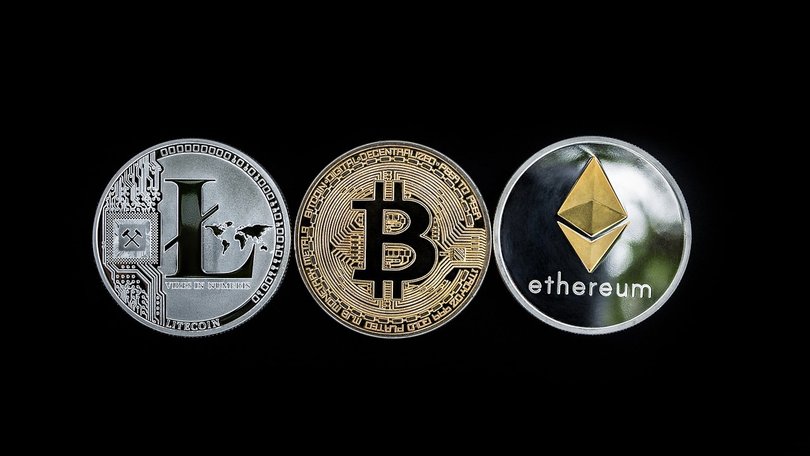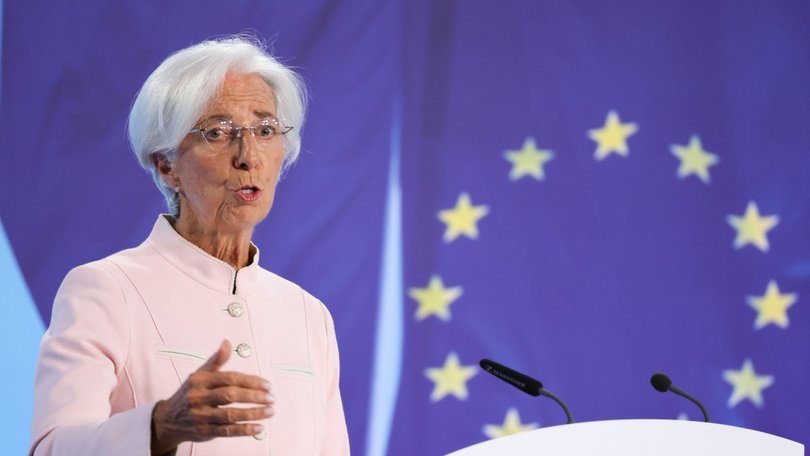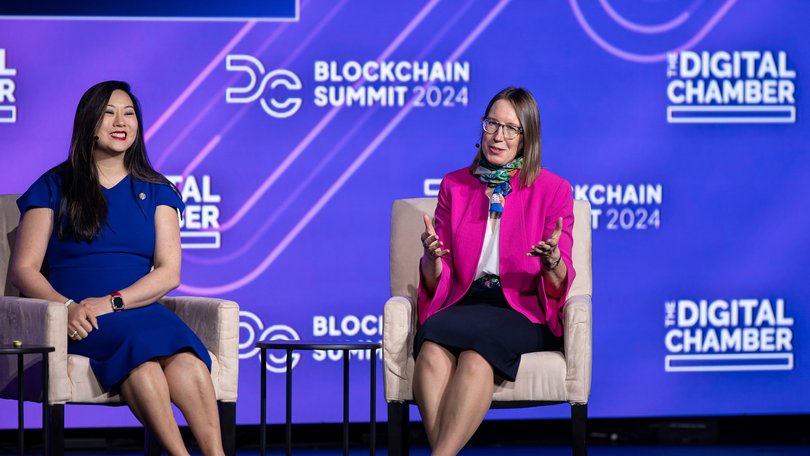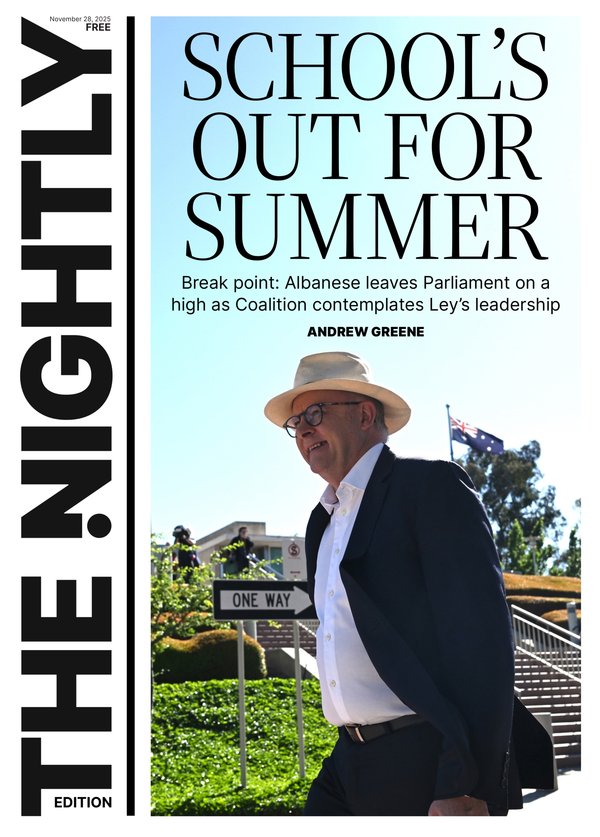THE ECONOMIST: The Cryptocurrency big bang is a game-changer that will revolutionise finance

Among the strait-laced denizens of Wall Street, crypto’s “use cases” are often discussed with a smirk. Veterans have seen it all before.
Digital assets have come and gone, often in style, sending hype-prone investors in memecoins and NFTs on a ride. Their use as anything other than a tool for speculation and financial crime has been repeatedly found wanting.
Yet the latest wave of excitement is different. On July 18th US President Donald Trump signed the GENIUS Act into law, providing stablecoins — crypto tokens backed by conventional (usually dollar) assets — with the regulatory certainty that insiders have long craved.
Sign up to The Nightly's newsletters.
Get the first look at the digital newspaper, curated daily stories and breaking headlines delivered to your inbox.
By continuing you agree to our Terms and Privacy Policy.The industry is booming; Wall Streeters are now scrambling to get involved. “Tokenisation” is also taking off: a rapidly growing volume of assets trade on blockchains, representing stocks, money-market funds, and even private-equity stakes and debt.
As with any revolution, the insurgents are euphoric and the old guard concerned. Vlad Tenev, chief executive of Robinhood, a digital-assets broker, says the new tech can “lay the groundwork for crypto to become the backbone of the global financial system”.
Christine Lagarde, President of the European Central Bank, sees things a little differently. She worries that the rush of new stablecoins amounts to nothing less than “the privatisation of money”.

Both appreciate the scale of the change at hand.
The present moment holds the potential of something far more disruptive for mainstream markets than earlier crypto speculation. Whereas bitcoin and other cryptocurrencies promised to be digital gold, tokens are wrappers, or vehicles representing other assets.
That may sound unimpressive, but some of the most transformative innovations in modern finance simply changed the way in which assets are packaged, sliced and reconstituted — the exchange traded fund (ETF), the eurodollar and securitised debt among them.
Today there are $US263 billion ($398b) in stablecoins in circulation, some 60 per cent more than a year ago. Standard Chartered, a bank, expects the market to be worth $US2 trillion in three years’ time.
Last month JPMorgan Chase, America’s biggest bank, announced plans for a stablecoin-like product called JPMorgan Deposit Token (JPMD), despite the long-held crypto scepticism of the firm’s boss, Jamie Dimon.
The market for tokenised assets is worth just $US25b but has more than doubled in size over the past year. On June 30 Robinhood launched over 200 new tokens for European investors, enabling them to trade American stocks and ETFs outside of ordinary trading hours.
Stablecoins allow for transactions that are cheap and fast, as ownership is registered instantaneously on digital ledgers, cutting out intermediaries who run traditional payment rails. This is especially valuable for cross-border transactions that are currently expensive and slow.
Although stablecoins are now involved in less than 1 per cent of financial transactions around the world, the GENIUS Act will provide a boost. It confirms stablecoins are not securities, and requires the coins to be fully backed by safe, liquid assets. Retail giants, including Amazon and Walmart, are reportedly considering their own coins.
To consumers, these might work like a gift card, providing a balance to spend with the retailer, perhaps at lower prices. That would cut out firms such as Mastercard and Visa, which make a margin of 2 per cent or so on sales they facilitate in America.
Tokenised assets are a digital copy of another asset, whether that is a fund, a share in a company or a bundle of commodities. Like stablecoins, they can make financial transactions faster and easier, particularly ones involving less liquid assets. Some offerings are gimmicky. Why tokenise individual stocks?
Doing so may enable 24-hour trading, since the exchanges on which the shares are listed do not need to be open, but the advantages of that are questionable. And marginal trading costs are already very low, or even zero, for many retail investors.
Token effort
A lot of offerings are less gimmicky, however. Consider money-market funds, which invest in Treasury bills. A tokenised version could double as a form of payment. The tokens are, like stablecoins, backed by safe assets, and can be swapped seamlessly on blockchains. They are also an investment that beats bank interest rates.
The average American savings account offers a rate of less than 0.6 per cent; many money-market funds offer yields of 4 per cent. BlackRock’s tokenised money-market fund, the largest, is now worth over $US2b.
“One day, I expect tokenised funds will become as familiar to investors as ETFs,” wrote Larry Fink, the firm’s boss, in a recent letter to investors.
This will prove disruptive for incumbents. Banks may be trying to get involved with the new digital wrappers, but they are doing so in part because they are aware tokens are a threat. A combination of stablecoins and tokenised money-market funds could, in time, make bank deposits a less attractive product.
The American Bankers Association notes that if banks lost about 10 per cent of their $US19t in retail deposits — their cheapest form of funding — it would raise their average funding cost from 2.03 per cent to 2.27 per cent. Although total deposits, including commercial accounts, would not be reduced, bank margins would be squeezed.
The new assets may also prove disruptive for the broader financial system. Holders of Robinhood’s new stock tokens, for example, do not actually own the underlying securities.
Technically, they own a derivative that tracks the value of the asset, including any dividends the company pays, rather than the stock itself. Thus they do not gain the voting rights usually conveyed by stock ownership.
And if the issuer of the tokens goes bankrupt, the owners would find themselves in a difficult legal situation, competing with the collapsed firm’s other creditors over who should take possession of the underlying assets.
Something similar has happened with Linqto, a fintech startup that filed for bankruptcy earlier this month. The company had offered shares in private firms through special-purpose vehicles. Buyers are now unclear whether they own the assets they believed they possessed.
It is one of the greatest opportunities for tokenisation that presents the greatest difficulty for regulators. Pairing illiquid private assets with easily exchanged tokens opens a cloistered market toms of retail investors, who have trillions of dollars of capital to allocate.
They could buy slivers of the most exciting private companies, currently beyond their reach. This raises questions. Agencies such as the Securities and Exchange Commission (SEC) have far more sway over publicly listed firms than private ones, which is what makes the former suitable for retail investment.
Tokens representing private shares would turn once-private stakes into assets that could be traded as easily as an ETF. But whereas the issuers of an ETF promise to provide intraday liquidity by buying and selling the underlying assets, the providers of tokens do not. At a large enough scale, tokens would in effect turn private firms into public ones, without any of the disclosure requirements normally required.
Even pro-crypto regulators want to mark clear lines in the sand. Hester Peirce, a SEC commissioner known as “crypto mom” for her digital-friendly approach, emphasised in a statement on July 9 that tokens ought not to be used to skirt securities laws. “Tokenised securities are still securities,” she wrote.

As such, disclosure rules for companies issuing securities will be enforced, regardless of whether the securities come wrapped in new crypto packaging. Although that makes sense in theory, a plethora of new assets with novel structures means that watchdogs will be playing catch-up endlessly in practice.
So there is a paradox.
If stablecoins are to be truly useful, they will also be truly disruptive. The more attractive tokenised assets are to brokers, customers, investors, merchants and other financial firms, the more they will change finance, in ways both welcome and worrying.
Whatever the balance between the two, one thing is already clear: the view that crypto has not produced any innovations of note can be consigned to the past.
Originally published as Crypto’s big bang will revolutionise finance
